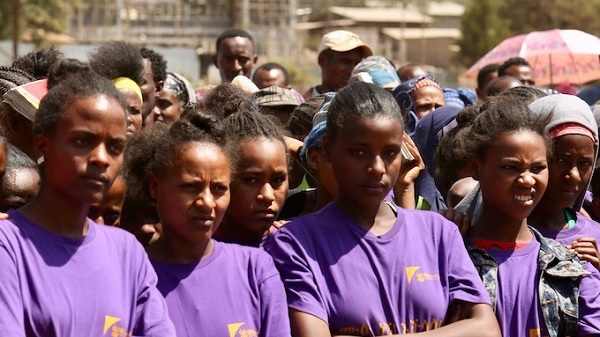
The fastest decline in the rate of FGM has been in East Africa, where the prevalence among girls up to 14 years old dropped from71.4% in 1995 to 8% in 2016.
(CNN)–Therate of female genital mutilation, or cutting, in young girls has seen a”huge and significant decline” across most parts of Africa overnearly three decades, according to a new analysis.
The fastest drop has been in East Africa, says the report, published Wednesday in the British Medical Journal. There, prevalence among girls up to 14 years old dropped from 71.4% in 1995 to 8% in 2016.
Traditionally, rates have been high in East African nations, such as Somalia,where 98% of women between the ages of 15 and 49 have been cut, according to UN figures.
The decline has been “much slower” in West and North Africa but is still significant, said the report’s authors, a team of UK and South African researchers led by Ngianga-Bakwin Kandala, professor of biostatistics at Britain’s Northumbria University.
In North Africa, the percentage of girls undergoing FGM dropped from 57.7% to 14.1% between 1990 and 2015, according to the report. Meanwhile,in West Africa, the prevalence of the practice fell from 73.6% in 1996 to 25.4%in 2017.
In two countries in the Middle East covered by the data, Iraq and Yemen, the rate of FGM has actually increased since 1997, the report said.
The report drew on data gathered between 1990 and 2017 covering nearly 210,000 girls from 14 up, from 29 countries.
“There is evidence of huge and significant decline in the prevalence of FGM/C among children across countries and regions,” the report’s authors wrote.
“There is a need to sustain comprehensive intervention efforts. In addition, further targeted, culturally sensitive policy interventions and other effective strategies for preventing FGM/C should be a major public health priority in countries and regions still showing high prevalence of FGM/C among children, where the practice is still pervasive.”
Female genital mutilation involves the altering or removing of the female genitals, such as the clitoris or labia. The procedure can cause severe bleeding and health issues including infections and infertility, as well as complications in childbirth.
According to United Nations statistics, at least 200 million girls and women across 30 countries are today affected by the practice, which is recognized internationally as a violation of the human rights of girls and women.
The report’s authors note that while the significant overall decline points toward the success of national and international investment and intervention over the past three decades, certain risk factors still prevail and could lead to a reversal in the trend in some countries.
Read the complete story at CNN
